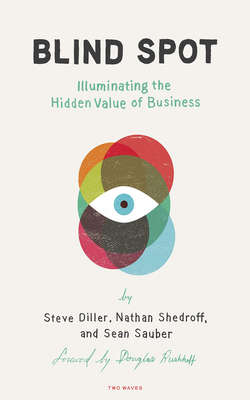Читать книгу Blind Spot - Nathan Shedroff - Страница 17
На сайте Литреса книга снята с продажи.
Relationships with Organizations
ОглавлениеAt this point, you may object that what we’re describing is not, in fact, a relationship, because relationships can exist only between people. Some may also object that this discussion is reminiscent of the recent, questionable Supreme Court decision reiterating that, in legal terms, corporations are, essentially, the same as people.
Let’s put the “corporations are people” objection to rest first and agree that an organization formed by people is not the same thing as a single person. For one thing, an organization has no corporeal presence in the world. For another, it has no autonomous consciousness. Perhaps, in the future, other, non-physical creations of people, like artificial intelligences, may prompt reconsideration. But, for now, let’s agree that a corporation is not a person.
That leaves the primary objection: that people can’t really have a relationship with an organization (and vice versa). There’s really no reason to make such an assertion. As the Merriam-Webster Dictionary describes it, a relationship is “the way in which two or more people, groups, countries, etc., talk to, behave toward, and deal with each other.” Clearly, people can talk to, behave toward, and deal with companies.
People also react to what companies do and often imagine companies as if they were people. In fact, as stated in the introduction to this book, there is ample evidence that people do just this. In addition, corporations are often sufficiently aware of this personification tendency that they seek to influence, imagining their companies as having characters and creating personas that align with the sort of personality customers may want them to have.1
It’s possible that underlying these objections may be a general uneasiness with the current state of people-to-people relationships and a fear that individuals may confuse the relationships they develop with companies as worthy substitutes for the real thing. This is exactly the conversation that occurs continuously in regard to technology’s impact on society.
Ultimately, because humans are social beings (and busy ones at that), they must develop and maintain valued relationships to survive and thrive. And it’s difficult to imagine a situation in which people-to-organization relationships would provide enough of what we need as social beings to result in healthy, thriving individuals. That said, because people tend to personify organizations as well as value people-to-company relationships that provide great experiences, there is no reason to fear the development and evolution of such relationships. They augment other social relationships, often resulting in richer lives for all concerned. They also serve as an important metaphor for seeing how we relate to each other.
In the final chapter of this book, we muse a bit about whether great people-to-company relationships may actually enhance people’s capacities to have great people-to-people relationships. For now, though, let’s simply work with the reality that people value relationships with certain companies, under certain circumstances, and by working to evoke those relationships they can make customers’ lives better.
